You’re leading an aerospace company with breakthrough capabilities—but here’s the problem: your brand isn’t landing with decision-makers.
It’s not your engineering. It’s not your innovation.
It’s the metrics you’re tracking—or worse, the ones you’re ignoring. In a hyper-competitive, compliance-heavy industry like aerospace, where trust, timing, and visibility mean everything, failing to measure the right branding KPIs can quietly tank your growth.
I’m Viktor—strategist, pitch deck expert, and wannabe fly fishing afficionado.
This article is your blueprint to the five branding metrics every aerospace CEO must track.
These aren’t vanity metrics. They’re operationally aligned, investor-savvy, and field-tested indicators designed to optimize ROI, increase reliability perceptions, and position your company ahead in a market where attention is rare and trust is everything.
Let’s get to work.
Metric 1 – Brand Awareness Across Stakeholder Tiers
In the aerospace industry, brand awareness is about being known by the right stakeholders at the right point in the procurement cycle.
Unlike B2C industries, aerospace marketing must engage a matrix of decision-makers that spans both B2B and B2G (business-to-government) segments.
We’re talking OEM procurement leads, Tier 1 suppliers, defense contractors, and government program officers—all with different priorities, compliance frameworks, and sourcing behaviors.
Effective aerospace companies use a set of KPIs to track brand penetration across these stakeholder tiers, adjusting their messaging, content marketing, and outreach based on entity-specific engagement trends. These key performance indicators (KPIs) are crucial to gauge brand salience among stakeholders who influence RFPs, defense grants, and supply chain integration.
Performance indicators to monitor include:
Share of Voice (SOV) in industry media and procurement-related content ecosystems.
Google Trends and branded search volume, segmented by region and job title targeting.
Mention tracking in compliance and defense publications, including contracts.gov and defense procurement logs.
Indexed visibility in strategic partnership mentions, consortium bids, and public-private aerospace initiatives.
These metrics serve as leading indicators of brand reach and positioning effectiveness across the production process—from component manufacturing to full systems integration. By aligning these insights with real-time marketing strategies, CEOs can ensure their aerospace marketing efforts are penetrating the right procurement ecosystems.
Why Awareness is a Survival Metric in Aerospace
Here’s the truth: in a highly competitive market defined by low tolerance for risk, brand familiarity equals trust—and trust fuels contracts. Aerospace is a compliance-heavy, long-cycle industry where procurement decisions hinge not just on specs, but on perceived reliability, historical performance, and stakeholder confidence.
Even with a world-class product or superior technical innovation, a lack of brand awareness among the right government and industry channels will choke your market share potential. Aerospace manufacturers that treat awareness as a core performance metric gain early consideration in bid cycles and advance faster through supplier qualification protocols.
Key reasons why awareness is a critical performance indicator:
Compliance with industry standards often favors known, vetted vendors.
Supply chain partnerships are built on visibility and trust, not cold outreach.
Defense KPIs frequently prioritize incumbent reliability and mission continuity over unknown innovation.
Aerospace marketing KPIs provide insights into performance gaps and help tailor communication strategies to reduce friction with risk-averse buyers.
In an industry where technical parity is common, branding KPIs become the differentiator that positions your firm as a “safe bet” in a field of look-alikes. CEOs must leverage well-structured KPIs to track not only marketing reach but strategic alignment with procurement cycles and industry benchmarks.
This is more than awareness—this is a tactical edge in a market characterized by regulatory rigor and massive capital stakes.
Metric 2 – Perceived Reliability and Trustworthiness
Whether you’re selling to commercial airlines, government defense buyers, or Tier 1 aerospace manufacturers, your brand’s perceived reliability is directly tied to trust in your product’s safety, durability, and operational performance.
This is where key performance indicators (KPIs) shift from abstract brand sentiment to measurable business risk.
Your aerospace marketing must convey more than innovation—it must signal stability, compliance, and proven performance under pressure.
In a sector defined by complex manufacturing processes, global supply chain dependencies, and zero-failure tolerance, buyers evaluate your brand not just by its promise, but by its past.
To measure brand reliability perception, companies must integrate both qualitative and quantitative performance indicators, including:
Surveys and NPS (Net Promoter Scores) from partners, OEM buyers, and certification authorities.
Third-party audit visibility, such as AS9100 compliance scores or FAA oversight outcomes.
Incident report trend monitoring, including near-miss data, maintenance turnaround stats, and failure-rate benchmarks compared to industry standards.
These indicators form the backbone of a performance management system that builds brand equity on the foundation of technical credibility.
Metrics to Watch
Tracking perceived reliability is not as simple as a star rating—it’s a layered composite of how stakeholders experience your product’s performance across its entire lifecycle. In a competitive industry marked by narrow margins and intense scrutiny, the right KPI tracking system can be the difference between being shortlisted and being blacklisted.
Key KPIs include:
Trust Index Scores: Derived from structured partner interviews, compliance history, and customer satisfaction metrics. These provide a macro-view of your reputation in the aerospace supply chain.
Supplier Risk Ratings: Used by OEMs and primes to determine your eligibility for mission-critical contracts. These ratings consider historical delivery reliability, issue resolution speed, and system compatibility.
Quality Control Pass Rate Sentiment: This KPI overlays manufacturing KPIs with stakeholder perception, tracking not just failure rates but how those are communicated and remediated. Reputation for continuous improvement can boost perception even amid technical setbacks.
Production Process Audit Outcomes: Integration of real-time audit data into brand reporting dashboards ensures visibility into how compliance with industry standards is influencing external trust.
By aligning these metrics with aerospace marketing initiatives—like white papers, case studies, and transparency-driven content marketing—CEOs can leverage branding KPIs to reinforce their firm’s trust profile and performance against strategic goals.

Metric 3 – Content Engagement from Engineering and Procurement Stakeholders
In the aerospace industry, your logo, color palette, or slogan isn’t what earns trust.
Instead, it’s your technical content—the engineering briefs, whitepapers, capability statements, and detailed responses to RFPs—that define your brand in the minds of procurement officers and aerospace engineers.
This is especially true in a compliance-heavy, performance-driven sector where buying decisions hinge on hard data, not emotional appeal.
In this context, aerospace marketing becomes a function of how well you educate, inform, and support highly specialized audiences with technical depth and precision.
For aerospace manufacturers, leveraging KPIs tied to content engagement allows leadership to measure the performance of their brand communication strategy in a way that aligns with both engineering culture and procurement behavior.
Technical content becomes your reputation vehicle, and understanding its impact is a key performance indicator in positioning your firm as a trusted solutions provider.
KPIs to Track
The effectiveness of your content marketing strategy in aerospace can be quantified through a specific set of KPIs that reflect not just attention, but trust-building intent. These performance indicators reveal how stakeholders consume, evaluate, and act upon your educational and sales-enabling materials—insights critical in a competitive market where relationship-building often starts long before an RFQ is issued.
Key KPIs include:
Time-on-Page for Technical Articles: Longer dwell times on specification sheets, product application guides, or case studies signal relevance and perceived value—critical in early-stage solution vetting.
Document Downloads: Whether it’s a product roadmap, compliance protocol, or whitepaper on aerospace component innovations, downloads indicate direct interest from stakeholders evaluating potential vendors.
Inbound Inquiries Triggered by Content: Measure how many contact form submissions, demo requests, or follow-up emails originate from content exposure. This is a direct performance indicator of how well your materials are converting curiosity into conversation.
Conversion Pathways: Map and optimize the journey from content consumption to sales engagement. This includes tracking which pieces of content lead to the most qualified leads or procurement discussions—essential for refining digital marketing strategies in aerospace.
Engagement by Segment: Segment your KPI reporting by engineering, procurement, and compliance roles to understand how different personas interact with your content across the aerospace supply ecosystem.
Case Study Interaction Rates: In a manufacturing industry where reliability and proven outcomes matter, measuring how often case studies are accessed and shared internally within prospect organizations can offer high-value signals.
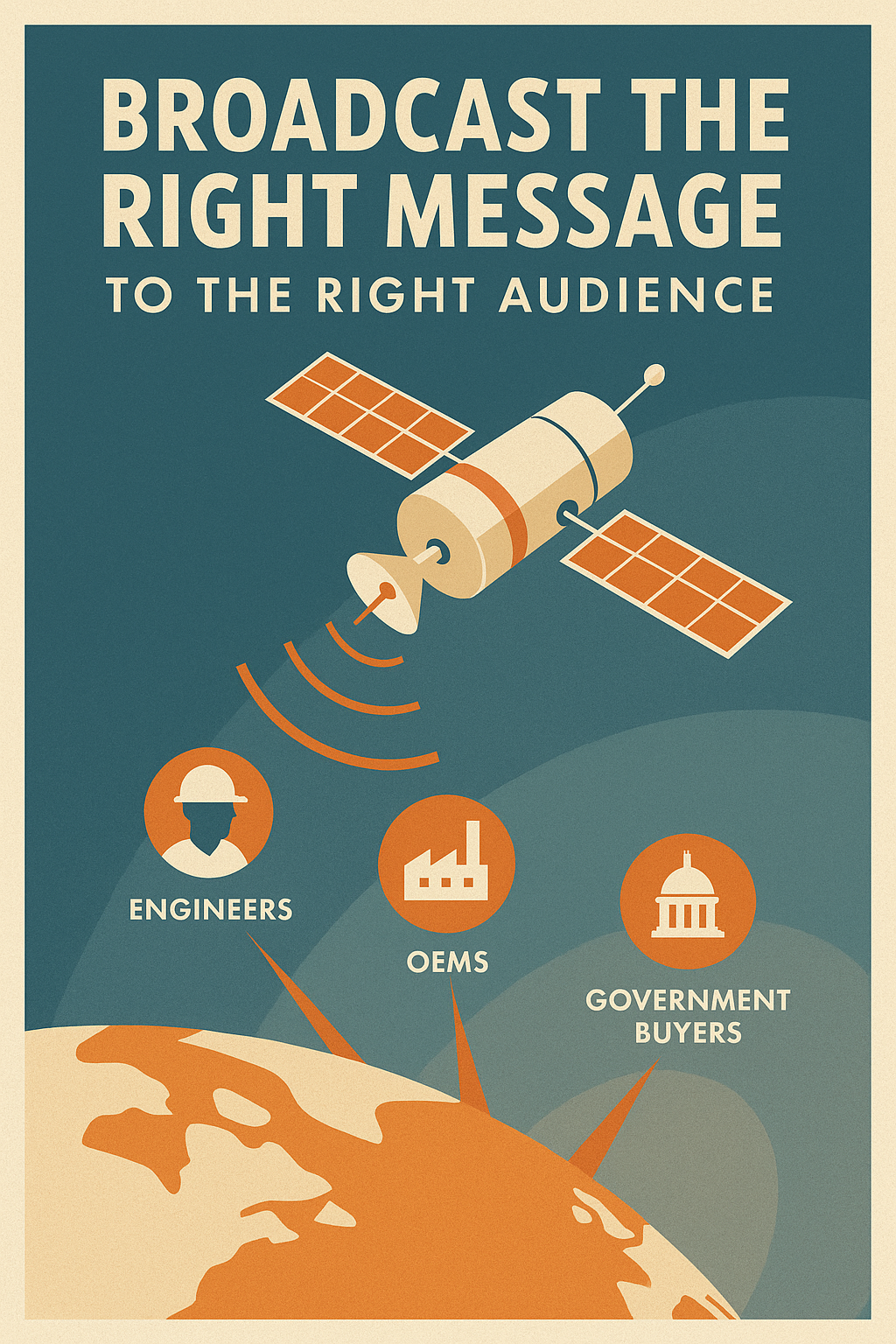
Metric 4 – Brand-Attributed Pipeline Value
In the aerospace industry, where long sales cycles, rigorous compliance checks, and high-stakes contract bids dominate, branding must must drive business outcomes.
Yet many aerospace companies fail to connect their aerospace marketing efforts with actual revenue opportunities.
That’s a missed opportunity in a competitive market where reputation and visibility can make or break a deal.
Brand-attributed pipeline value is a key performance indicator (KPI) that links your marketing initiatives directly to revenue-generating activities like RFP invitations, strategic alliances, defense procurement visibility, and joint ventures.
In this context, branding is not a soft metric—it’s a performance engine that feeds your business development funnel.
Forward-looking aerospace manufacturers are now using marketing strategies that integrate brand intelligence into pipeline analysis, giving executives a clearer understanding of how branding impacts production processes, supply chain access, and contract acquisition.
These key performance indicators are essential for positioning your business for scalable growth, especially when navigating high-barrier sectors such as defense contracting and government-backed aerospace programs.
Pipeline Attribution Techniques
To measure brand impact on deal flow with precision, you need real-time, data-informed KPIs. These aren’t just about clicks—they’re about identifying how your brand visibility influences conversion across a distributed, multi-touch buyer journey that spans from early awareness to post-compliance vetting.
Here are the top metrics and KPIs to track:
Multi-Touch Attribution Modeling: Aerospace buyers often engage with 6–12 content or brand touchpoints before initiating a formal inquiry. Multi-touch models allow you to assign value to each brand interaction—whitepapers, webinars, case studies—and measure the performance of your full marketing initiative.
CRM-Based Brand Source Tagging: Your CRM should capture first- and last-touch branding influence on opportunities, particularly those linked to defense KPIs or manufacturing companies bidding for Tier 1 supplier status.
Branded Search Performance in Contract Windows: One of the clearest indicators of branding-driven pipeline value is the spike in branded search volume during key procurement windows. When decision-makers type your name—unprompted—you’ve crossed into preferred vendor territory. This is a crucial performance indicator in aerospace marketing strategy.
Pipeline Velocity by Campaign Attribution: Track how fast branded leads progress compared to non-branded ones. In the aerospace manufacturing world, a shortened deal cycle due to high trust or clear differentiation is a direct ROI win.
Co-branded Initiative Uplift: For companies engaged in strategic partnerships or joint R&D programs, brand exposure in shared communications can directly influence pipeline expansion. Use KPIs to monitor co-marketing-to-pipeline lift.
Top-of-Funnel Lead Quality Scoring: Leads driven by brand engagement often score higher in intent and relevance. Assign weight in your marketing strategies to brand-originated MQLs (Marketing Qualified Leads) and compare their financial performance downstream.
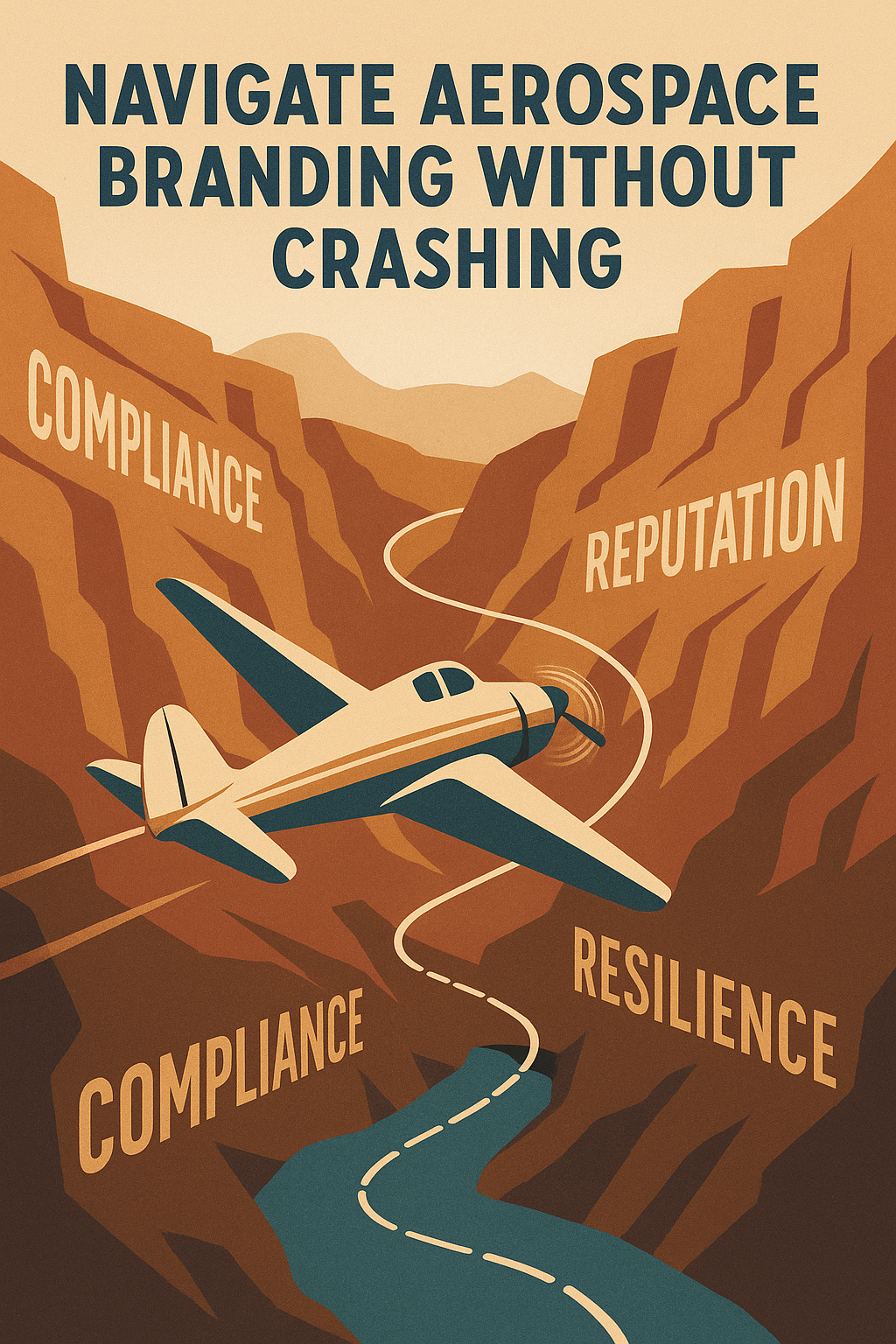
Metric 5 – Compliance and Reputation Resilience
Reputational damage is not a PR issue in this industry—it’s a business continuity risk.
Whether it’s a compliance breach, a supplier defect, or a regulatory audit failure, missteps can derail contract negotiations, delay certification, or lead to blacklisting from key procurement frameworks.
In this context, branding becomes a strategic insulation layer—the buffer between incident and irreparable damage.
Strong aerospace brands recover faster because they’ve built trust equity before the crisis hits.
They’re seen as transparent, competent, and committed to improvement.
When aerospace manufacturers embed resilience into their brand strategy, they gain more than goodwill—they gain time, grace, and continued access in a highly competitive market where reputational risk is magnified by the stakes of safety, compliance, and national security.
This is why reputation resilience must be built into your KPI framework. CEOs and CMOs must track how quickly and effectively their brand can rebound from scrutiny, and how well that recovery aligns with performance indicators like buyer retention, partnership durability, and industry sentiment.
Trackable Indicators
Measuring compliance and brand resilience requires a layered approach that blends qualitative perception data with quantifiable performance metrics. These key performance indicators (KPIs) provide visibility into how well your brand can absorb shocks and maintain buyer confidence in the face of industry disruptions.
Essential KPIs include:
ESG Sentiment Analysis: In a world increasingly driven by Environmental, Social, and Governance benchmarks, tracking how your sustainability and governance practices are perceived in industry and investor media is a leading performance indicator of reputational strength. Aerospace buyers, especially in defense, scrutinize ESG alignment as part of vendor due diligence.
Compliance Breach Perception in Industry Media: It’s not just whether an incident occurred—it’s how it’s framed. Media coverage sentiment, stakeholder commentary, and digital discourse around your compliance performance offer real-time insights into reputational risk. Use AI tools to conduct tone analysis across trade journals, LinkedIn mentions, and procurement community forums.
Crisis Response Speed Benchmarks: Time-to-respond is now a metric of trust. How quickly your brand acknowledges, communicates, and remediates a breach or dispute is increasingly tracked by OEM partners, regulatory boards, and even investors. Leading aerospace companies integrate well-structured KPIs that benchmark incident response time, resolution clarity, and post-crisis sentiment lift.
Vendor Retention Post-Incident: One of the most telling indicators of brand resilience is whether partners stay after a mistake. Monitoring retention of high-value buyers, strategic suppliers, and joint venture collaborators after a crisis offers a pragmatic KPI for evaluating brand elasticity.
Audit Recovery Score: How quickly your organization returns to compliant status after a failed audit or deficiency notice speaks volumes. Align this data with your broader aerospace marketing narrative to demonstrate a commitment to continuous improvement and performance reliability.
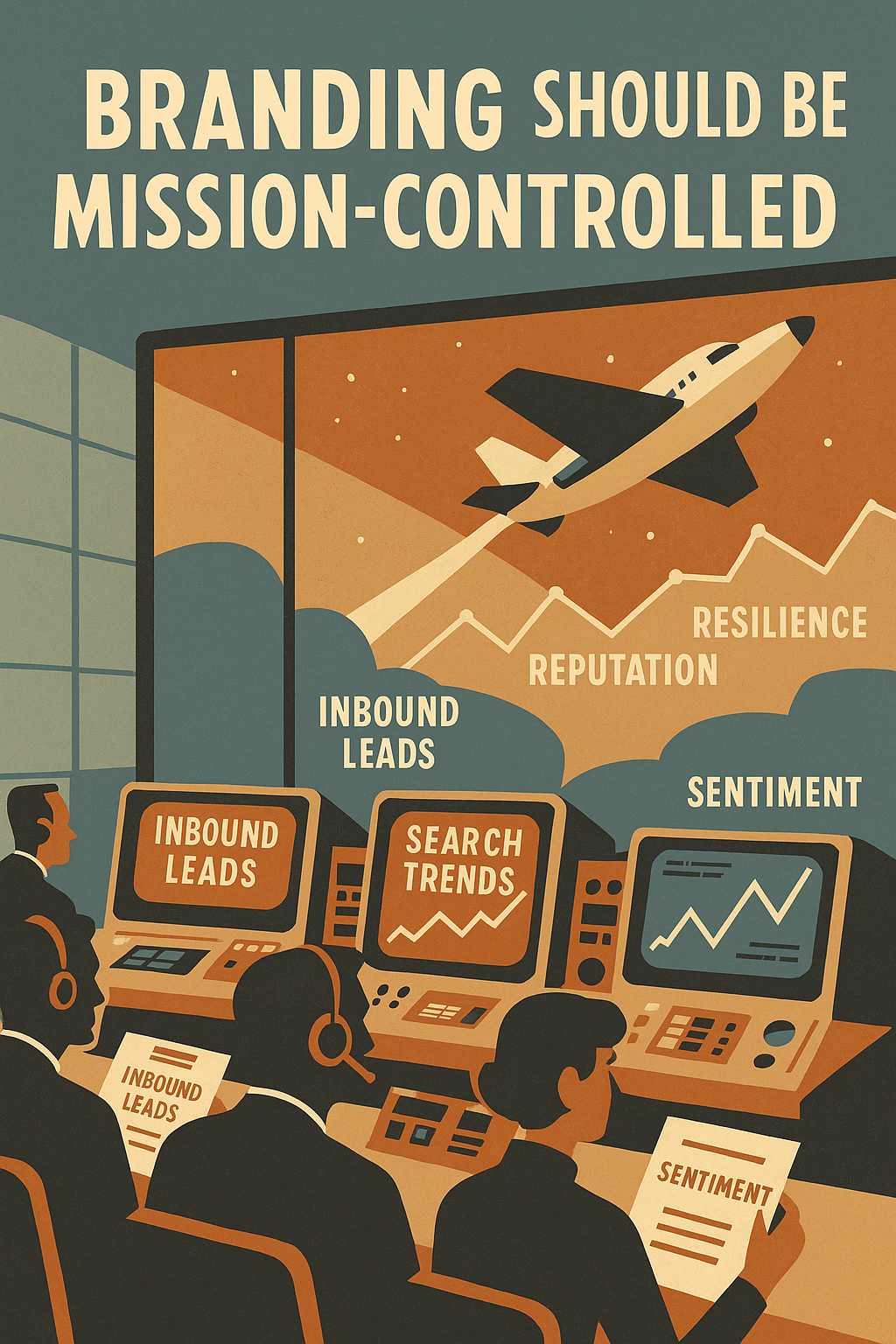
Branding Metrics in Action Among Aerospace Leaders
Tracking the right branding KPIs is a proven competitive strategy among the world’s most advanced aerospace companies.
These real-world case studies illustrate how leading firms use key performance indicators to manage perception, fortify resilience, and increase visibility in a competitive market where trust, innovation, and compliance converge.
Lockheed Martin’s Supply Chain Trust Score Strategy
Lockheed Martin, a cornerstone of the global defense and aerospace manufacturing ecosystem, has long prioritized supply chain performance indicators to sustain its dominance. The company implemented a proprietary trust scoring system for Tier 1 and Tier 2 suppliers, factoring in compliance reliability, delivery accuracy, corrective action speed, and innovation compatibility.
Key KPIs leveraged:
Supply chain trust scores based on multi-variable audit data.
Performance indicator dashboards shared with strategic partners to reinforce accountability.
Real-time quality control KPIs integrated into branding initiatives—positioning Lockheed as a transparency leader in a sector where opacity once reigned.
This trust-centric framework doesn’t just drive manufacturing efficiency; it reinforces Lockheed’s position as a partner-of-choice for allied governments and primes, with branding deeply embedded in operational excellence.
Boeing’s Post-Crisis Brand Recovery KPI Framework
After facing intense global scrutiny from the 737 MAX crisis, Boeing faced a challenge few aerospace manufacturers could survive: rebuilding trust in a brand synonymous with safety and scale. The company’s approach? A branding recovery strategy rooted in well-structured KPIs and transparency.
Performance indicators used in recovery:
Media sentiment analysis KPIs measuring public and stakeholder perception shift.
Time-to-response benchmarks for crisis communication.
ESG-aligned branding KPIs to reinforce commitment to safety, governance, and innovation.
Digital engagement KPIs to track return-on-trust from content explaining engineering corrections and internal culture shifts.
This data-driven framework helped Boeing gradually re-enter procurement channels and rebuild confidence across government and commercial partners—proof that branding KPIs are essential even for legacy titans.
Mid-Sized Aerospace Firm Leveraging Content-Led Branding for Export Growth
A European mid-sized aerospace manufacturer, focused on advanced materials for satellite structures, faced a growth ceiling in its domestic market. The solution? A content marketing strategy designed to reposition the firm as a thought leader in composite aerospace components.
Key branding KPIs applied:
Content-driven MQL generation metrics—tracking technical whitepaper downloads, webinar registrations, and engineer engagement.
Branded search lift during procurement seasons in Asia-Pacific and North America.
Conversion funnel analysis attributing 68% of export pipeline to branded content pathways.
Case study citation metrics—with clients referencing content during RFP processes.
By aligning branding with specific performance metrics, the firm expanded into five new markets within 18 months, proving that even outside the defense prime ecosystem, branding KPIs can deliver measurable return on investment.
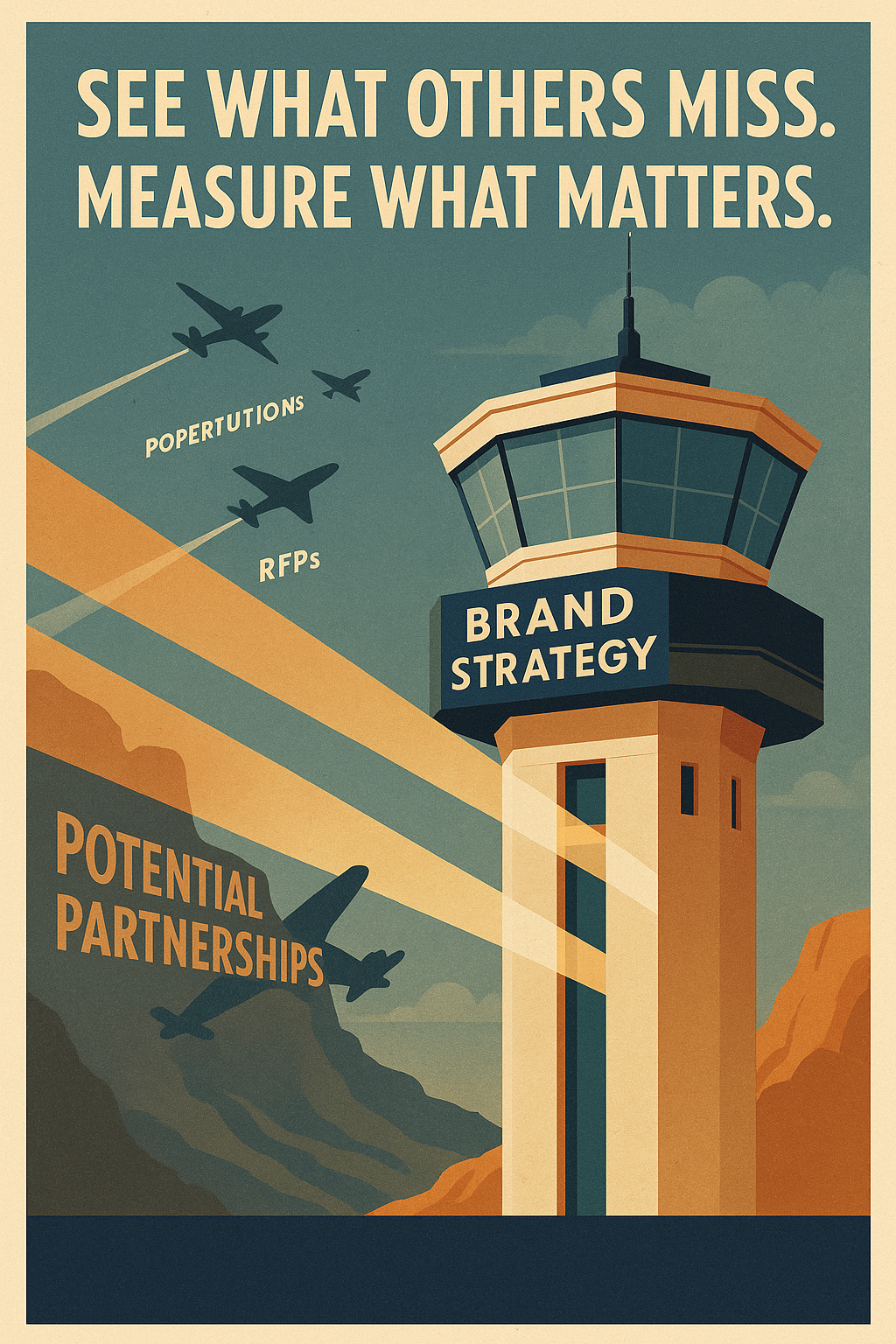
Best Practices – Implementing a Branding KPI Dashboard in Aerospace
A KPI dashboard is a real-time decision-making asset.
The complexity of the production process, diversity of stakeholder types, and compliance-centric procurement pathways require aerospace manufacturers to adopt a structured, yet dynamic branding performance system.
An effective branding KPI dashboard delivers executive-level visibility while aligning with operational realities unique to aerospace: extended sales cycles, buyer tiers from OEMs to government contractors, and intense reputation scrutiny.
Segment KPIs by Buyer Tier
To generate actionable insights, segment your key performance indicators (KPIs) by the audiences that matter most. Each tier engages with your brand differently, and your marketing strategies must reflect that variation.
Suggested segmentation model:
OEM-Level KPIs:
Share of voice in OEM-focused aerospace media.
Trust index from OEM procurement teams.
Brand-attributed RFP invitations or longlisting.
Tier 1/2 Supplier KPIs:
Content engagement metrics tied to integration readiness (e.g., whitepaper downloads on compatibility).
Supply chain compliance sentiment.
Branded search spikes before supplier evaluations.
Government Contractor KPIs:
ESG sentiment analysis in policy-adjacent outlets.
Perception of compliance transparency.
Inbound inquiries following defense program announcements.
Segmenting allows for real-time alignment of your branding activities to procurement windows, supplier certifications, and policy developments—maximizing the impact of your aerospace marketing efforts across the board.
Use of AI Tools for Sentiment and Stakeholder Persona Tracking
To stay competitive in a data-saturated, compliance-driven environment, companies in the aerospace sector are increasingly turning to AI-powered tools for branding intelligence.
AI applications in aerospace KPI tracking:
Sentiment Analysis: Use NLP-based sentiment engines to monitor tone and brand association in trade publications, stakeholder social activity (e.g., LinkedIn, gov platforms), and defense industry commentary.
Stakeholder Persona Modeling: AI can cluster and track engagement patterns by role—engineering, procurement, compliance—and tailor content marketing initiatives with precision. This boosts relevance and conversion across buyer tiers.
Crisis Signal Monitoring: Identify emerging perception risks by analyzing anomalies in brand mentions or keyword sentiment velocity—particularly valuable in aerospace manufacturing, where early containment is critical.
By integrating these AI-driven insights, your branding KPI dashboard evolves into a performance indicator system that adapts in real-time to market, media, and regulatory dynamics.
Template: Aerospace Brand KPI Dashboard
Here’s a simplified example structure of a well-structured KPI dashboard tailored for aerospace branding leadership:
| KPI Category | Metric | Target Segment | Frequency | Performance Indicator Type |
|---|---|---|---|---|
| Awareness | Share of voice in aerospace media | OEM, Gov Contractors | Monthly | Leading |
| Trust & Reliability | Compliance sentiment index | Tier 1 Suppliers | Quarterly | Lagging/Resilience |
| Content Engagement | Technical whitepaper downloads | Engineers, Program Leads | Weekly | Engagement |
| Pipeline Value | RFPs initiated from branded content leads | All Tiers | Monthly | Conversion |
| Crisis Recovery | Time-to-response benchmark (crisis incidents) | All Tiers | As needed | Resilience |
| ESG Brand Perception | ESG sentiment score by region | Gov & Defense Channels | Bi-monthly | Compliance |
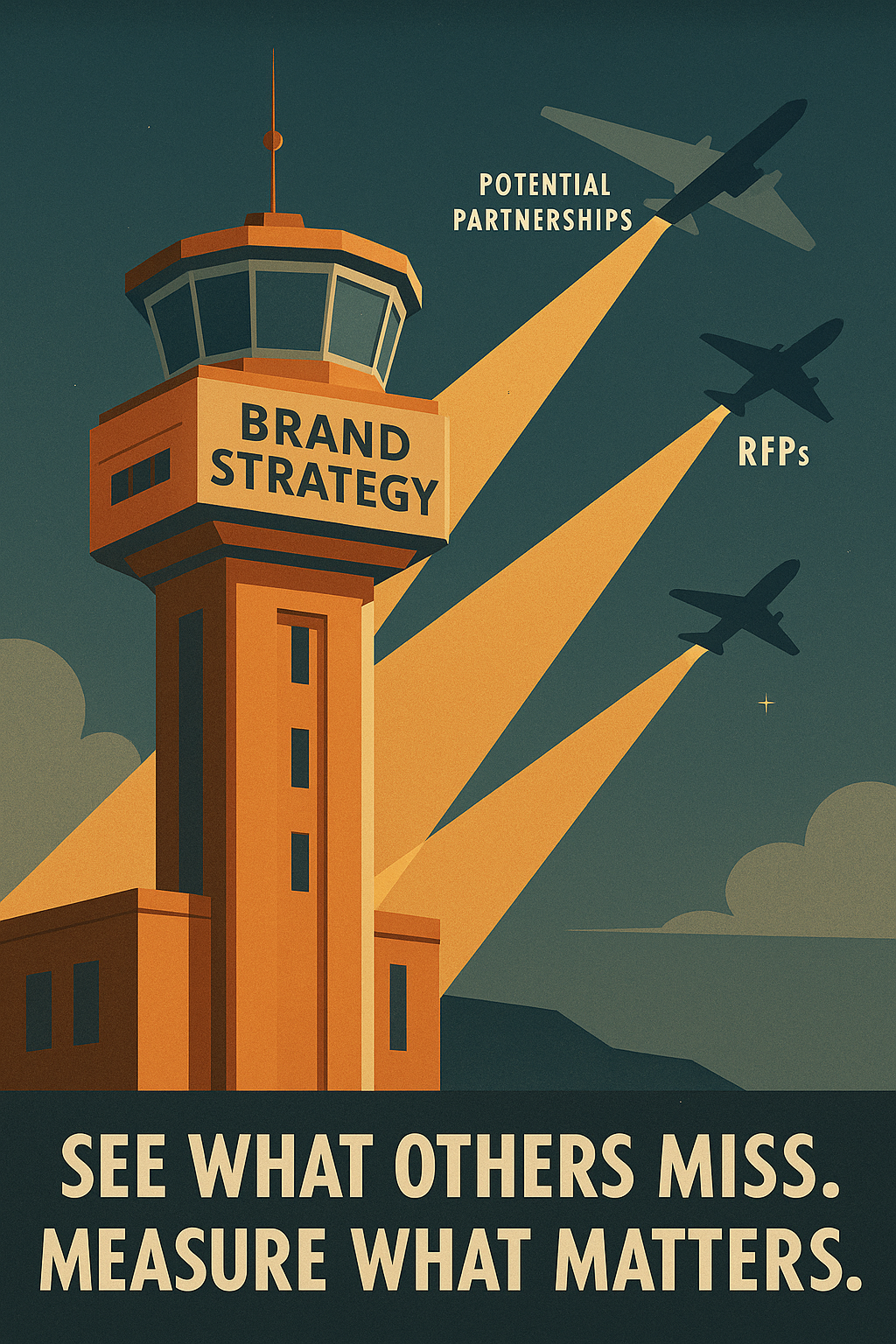
Branding Metrics as Strategic Leverage in Aerospace
In a sector defined by long procurement cycles, complex compliance, and unforgiving reliability standards, tracking the right branding KPIs is a strategic mandate for aerospace executives.
The aerospace industry is not like consumer markets; it’s a trust-centric, risk-averse environment where branding must be evidence-based, operationally aligned, and performance-tested.
Whether you’re competing for Tier 1 supplier slots, pursuing defense contracts, or scaling into new regions, your brand isn’t what you say—it’s what your metrics prove.
Your key performance indicators must reflect not only reach or impressions, but real-time insights into reliability, stakeholder trust, compliance perception, and strategic positioning.
The most effective aerospace companies have already adopted well-structured KPI frameworks to align their aerospace marketing with decision-maker behaviors across OEMs, government contractors, and global suppliers.
They’ve integrated AI-driven sentiment tools, dynamic content engagement trackers, and pipeline attribution models to turn branding into business velocity.









